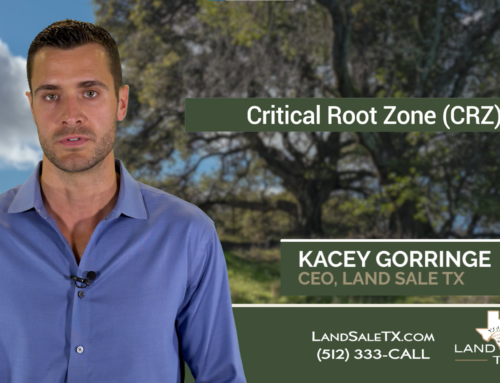Whenever you’re buying a piece of land, it’s important that you know how to understand and read a title commitment. Of course, we always recommend that you review that with your attorney as well. In a title commitment there are four sections: A, B, C and D.
A stands for Actual Facts. This is the who, what, when, and how much of a transaction. So, who’s buying it, what are they buying, where is it and how much are they paying. Something to look for on the section A is the ownership type. Generally speaking, it’s going to be fee simple ownership. This is very important and we’ll discuss this more in a future video as well.
The next section is section B which is Buyer Notification. These are any items that are exceptions to the title policy such as, deed restrictions, building setback lines, easements. This section is very very important. You want to monitor this closely and review this with your attorney. Generally speaking, title companies will have links that will attach to documents such as easements that are recorded that are encumbering the property.
Next section is section C, which stands for Clear to Close. These are any items that must be resolved before closing such as, if there’s a mortgage on the property, if there are any liens attached to the property.
The last one is Disclosure. This is just simply stating who the title company is, if they have any affiliations with other companies that they’re working with. Most of this is just very generic stuff but, still important to know.
One caveat that you want to look out for with a title commitment and working with any title company is that, generally speaking, title companies will not go look at past deeds from previous ownership before, whether it’s 20 30 50 100 years before. We bought a property and the title company told us that there were no deed restrictions on the property. Lo and behold, when we went to sell it eight months later, we actually found that there were in fact deed restrictions on the property which obviously threw a very big curveball at us. So, it’s important that you take the initiative to look at all of the past deeds before because maybe there were deed restrictions written in a deed, but they weren’t actually recorded. So it’s important that you look at these past deeds.
Unfortunately, anything before 1985 is not digitized on most county appraisals or in county clerk’s website, so you actually have to go to the courthouse to find these documents. But, we highly recommend that you do that because, hopefully, you can find something that may have been missed.
Feel free to reach out to us with questions or other topics you’d like to see covered.
🤠 We’re Your Local & Trusted Central TX Land Buyers serving Travis, Williamson, Caldwell, Bastrop & Hays counties. Subscribe to our YouTube Channel for weekly tips and insight into land buying, land selling, and real estate investing from our seasoned land acquisition specialists. SUBSCRIBE: https://tinyurl.com/hcfnsyk8
💻 Want a Cash Offer for your land in 24 hours or less with No Agent Fees or Closing Costs? Learn more: CONTACT US: https://landsaletx.com/contact/
☎️ Looking to sell your Central TX land quick & stress-free -OR- Interested in investing in land in the area, we’d love to tell you about some of the off-market opportunities we find through our marketing. CALL or TEXT Us Today at (512) 387-7749.
SOCIALS: @LandSaleTX
Facebook: https://www.facebook.com/LandSaleTX/
Instagram: https://www.instagram.com/landsaletx/
⚠️ We are NOT attorneys, licensed CPAs or Tax Professionals. We can provide honest, ethical and creative solutions for selling or investing in land, but ALWAYS recommend you get advice from your attorney, CPA and Professional Tax Advisor.


